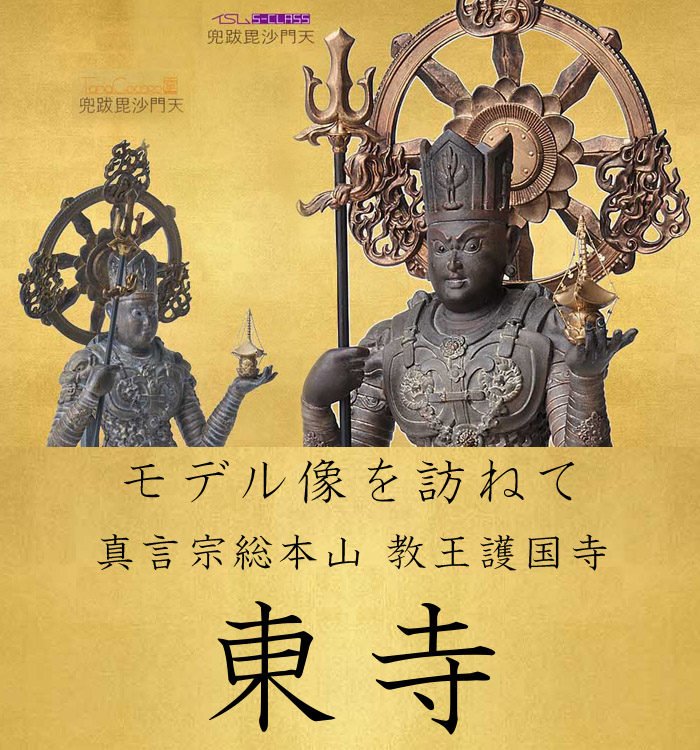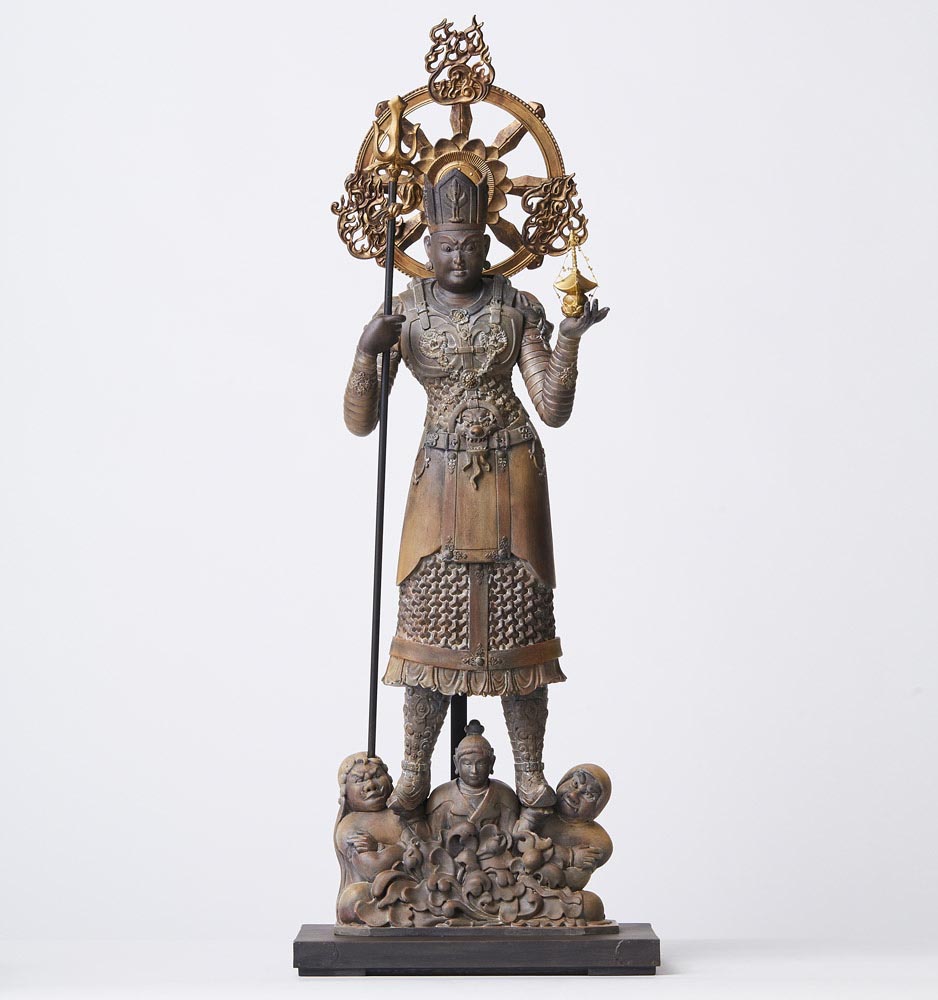

We visited To-ji Temple in Kyoto, which houses the national treasure 兜跋毘沙門天立像(Standing statue of Vaisravana with a Kabuto helmet).
To-ji Temple is a World Heritage Site. And To-ji is popular around the world for its many national treasures including the Kondo (main hall) and the five-storied pagoda. While walking around the temple grounds, we were reminded of the history of To-ji Temple.

In the Kyoto Station area near To-ji Temple, there are many historical sites within walking distance. Even if you go to Kyoto Station on a whim, you can visit world heritage sites and many national treasures just by walking around the area.

The Shinkansen train passes right by To-ji Temple. We should not say To-ji is closer to Kyoto Station. Historically, we have to say that Kyoto Station is close to To-ji Temple.
To-ji Temple has a long history in Kyoto, where various historical dramas have been repeated. If To-ji Temple has a mind, how does it feel about the way we are today?

The photo shows a lotus pond famous for its beauty.
The willow tree in the photo is famous for the "Anecdote of the Frog" by the Heian period Japanese calligrapher 小野道風 which is also used as old playing cards. Much of what is on this property is historical heritage.

This long cobblestone in front of Houmotsu-Kan(Treasure House), which shows that To-ji Temple is located on a large site.
To-ji Temple has received special favours from the rulers of every era and has protected this large site in the center of Kyoto for more than 1,200 years.
Shingon-shu Souhonzan
kyouou-Gokokuji To-ji
真言宗総本山
教王護国寺 東寺

When Emperor Kanmu founded the capital of Heian-kyo in 794 (Enryaku 13), he built two government temples To-ji and Sai-ji.
Later, To-ji Temple was entrusted to Kukai by Emperor Saga and To-ji Temple became the fundamental centre of Shingon esoteric Buddhism.
To-ji has remained at the centre of Kyoto for more than 1,200 years and has been revered by people throughout the ages.

The Five-storied Pagoda
The five-storied pagoda was destroyed by fire four times in natural disasters. However, it was rebuilt each time. The fifth generation built in 1644 is still loved around the world as a symbol of Kyoto.
The National Treasure 兜跋毘沙門天立像
(Standing statue of Vaisravana with a Kabuto helmet)

The national treasure 兜跋毘沙門天立像 is housed in the Houmotsu-Kan (Treasure House) of To-ji Temple. 兜跋毘沙門天立像 is said to have been enshrined on top of the Rajo-mon gate tower at the front of Heian-kyo.
兜跋毘沙門天立像 is characterised by its exotic beauty. And many copies of the statue remain in Kyoto and Nara.


![TanaCOCORO[掌]兜跋毘沙門天](https://ssl.isumu.jp/img/tc3795/lp/d1.jpg)
![TanaCOCORO[掌]](https://ssl.isumu.jp/img/tc3746/tc.png)



